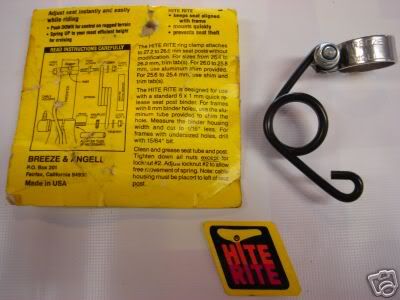syadasti
Wet Rag
Riding RV I raised a seatpost to the max height for efficient climbing and then realized cannot shift weight effectively anymore... stop and drop it... that is such distraction... so I gonna try an adjustable seatpost very soon
I have a friend who rides his XC bike at full extension and rides down terrain steep enough to challenge the average gravity rider on a DH rig..
Also lots of people are use to riding dropped also, see Stowe scene, and many are still plenty fast.
An adjustable seatpost is yet another cycling industry crutch/distraction/toy/fad, especially around here with such short climbs/descents. You spend too much time putting it up and down rendering these posts unnecessary. I tried one for a while and went back to a compromise height on a standard seatpost (which is lighter and stronger if you are so XC oriented).
don here had one too and he doesn't use one any more either I think?
The places it would really make a difference, steep shuttled worthy terrain, trial-like moves, or occasional obstacle require more than 3-4" of adjustment almost all of them offer (I think rase is the only to offer significant height range adjustment).
The rapid adjust seatpost comes and goes, its nothing new - see hite-rite (and later there was on that looked like a parallelogram suspension post but it was for height adjustment, can't find it right now):

Even some people out West don't like them much:
kidwoo said:Yes I think most people including myself will admit that it's a little more comfortable with the seat out of the way but for the constant up and down of a lot of fun descents, it's not worth screwing around with a quick release OR an adjustable seatpost when the differences really aren't that great in how it affects bike handling. And that's obviously subjective. Just because YOU like it doesn't mean it's a necessity for everyone riding similar terrain.
Last edited:






